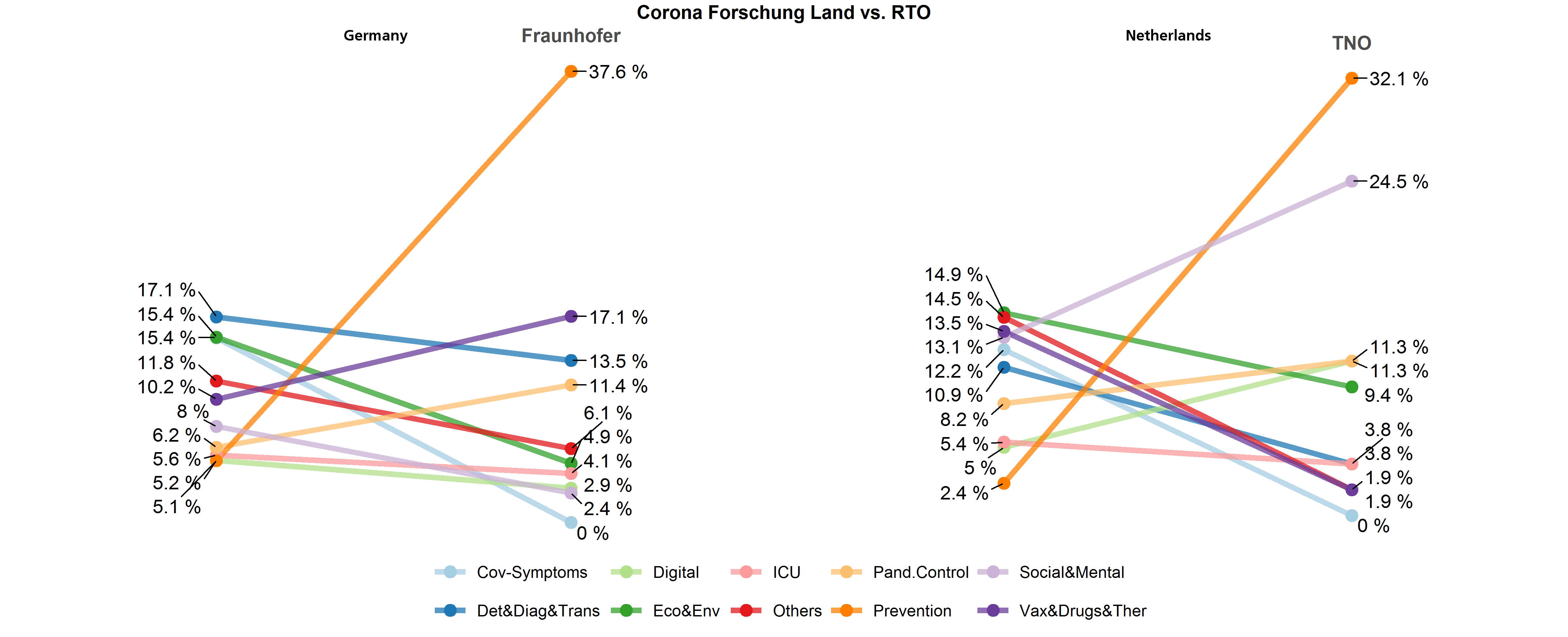The project “Crisis management and resilience – Corona” (KResCo) aimed at analyzing the political decisions and their effects in the context of the Covid-19 pandemic and formulating relevant recommended actions
The objective of the project’s work package 7 was to analyze and compare the research activities in various European countries and the Research and Technology Organizations (RTOs) represented there. The work was completed in cooperation with the groups TFU and WZA, using quantitative methods.
The research activities for each country were analyzed using the publications in Web of Science. A methodology was developed for this, in which an expert used an iterative process to create a classification system for the coronavirus-related research. Initially, there were six classes and corresponding search queries defined by the expert. In the next step, the publications on coronavirus research were classified into the appropriate classes using a machine learning approach based on natural language processing. The publications that were the results of the queries for the classes served as training data. Finally, ten different classes were defined according to this methodology (for example, »Prevention« or »Vax&Drugs&Ther«). The results were evaluated by said subject expert and recommendations for changes to the classification system as well as to the individual search queries for the classes were considered. The countries analyzed and their relevant research organizations were: Germany with the Fraunhofer-Gesellschaft (FhG), the Netherlands with the Netherlands Organisation for applied scientific research (TNO) and Austria with the Austrian Institute of Technology (AIT).
This innovative type of analysis allowed, on the one hand, a comparison over time between 2020 and 2021, and on the other hand, a comparison at country and RTO-level. Figure 1 illustrates a comparison of the research activities in Germany and the Netherlands with respect to the project reaction in the relevant research institutes. There are several things to note about this. Firstly, that FhG and TNO place a strong focus on “prevention”. At FhG, it is also noteworthy that a very high percentage of projects are assigned to “Vax&Drugs&Ther”. At TNO, the class “Social&Mental” is the second most-represented and is far above the country-specific activity and that of the FhG. While the area “Cov-Symptoms” played a big role in both the German and Dutch research landscape (15.4% and 12.2%), it was not evident in the FhG and TNO projects. Both institutes are again significantly more active in the field of “Pand.Control” than compared to the country-specific research. Overall, many similarities can be drawn between the research activity of the RTOs, as well as many common differences in comparison to the country-specific research.
This approach is therefore a good example for the active development of methods to open up perspectives on quantitative data that have not been used in this way before.
 Fraunhofer Institute for Technological Trend Analysis INT
Fraunhofer Institute for Technological Trend Analysis INT